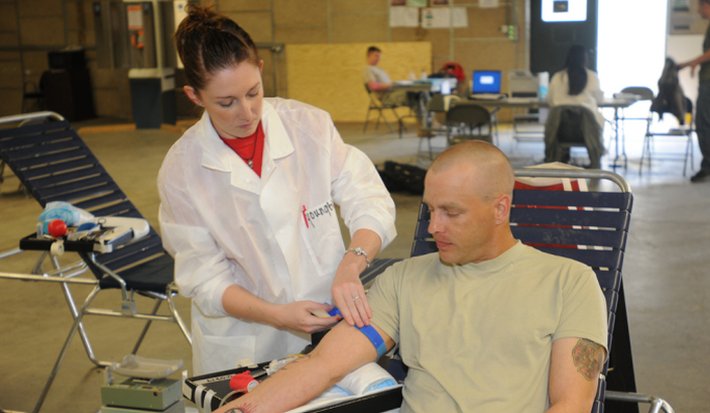Guide To Phlebotomy Schools
Phlebotomists practice venipuncture, a complex skill set that involves drawing blood from the body in a safe and medically useful manner. They are normally responsible for preparing and processing blood and tissue samples in the lab, while adhering to health codes, office protocols and accepted laboratory test practices. The best technicians are detail-oriented and can handle delicate lab specimens with extreme accuracy.
Phlebotomy is also a patient-centered medical service. Having blood drawn can be stressful for many people, so being able to maintain a positive bedside manner and communicate with a variety of individuals are key skills in this profession.
Click here to view phlebotomy training programs available in your area and online.
Experience is the phlebotomist’s greatest asset, followed closely by formal certification. Certification is interpreted by employers as a sign of professional competency and most phlebotomy positions require it. Having skills backed by a formal education can also translate into higher pay and supervisory positions further down the road.
Choosing a Phlebotomy School

Accreditation and CertificationThe National Center for Competency Testing, or NCCT, is a prominent certifying organization for medical assistants and clinical support staff around the world, including phlebotomy technicians. NCCT certification applicants may either complete a qualifying phlebotomy program or acquire sufficient work experience to sit the exam.
Other, competing phlebotomy certification agencies are also available. When deciding on an agency, remember that a certificate is only as valuable as its accreditation. Look for certifying agencies that have been accredited by the National Commission for Certifying Agencies (NCCA) or the National Accrediting Agency for Clinical Laboratory Sciences (NAACLS).
Valid U.S. phlebotomy certifiers include:
- National Center for Competency Testing (NCCT)
- American Medical Technologists (AMT)
- American Society of Phlebotomy Technicians (ASPT)
- American Society for Clinical Pathology (ASCP)
- National Healthcareer Association (NHA)
- American Association of Medical Assistants (AAMA)
- National Phlebotomy Association (NPA)
- American Association of Medical Personnel (AAMP)
Click here to view phlebotomy training programs available in your area and online.
Levels of certification vary by organization and sometimes by state where regulations exist. California, for instance, issues the following certifications:
- Limited Phlebotomy Technician (LPT): Skin puncture blood collection only.
- Certified Phlebotomy Technician I (CPT I): Venipuncture and skin punctures.
- Certified Phlebotomy Technician II (CPT II): Venipuncture, arterial puncture and skin punctures.
State RegulationWhile most states do not regulate phlebotomy, those that do want applicants to have sufficient documented training prior to licensure, unless they are already doctors, nurses or clinical lab workers. The state of California, for example—where the discipline is highly-regulated—requires licensure applicants to have at least 40 hours of class training in phlebotomy theory plus 40 hours of practice, as measured by the successful completion of at least 50 venipunctures and 10 skin punctures. The only other states that regulate phlebotomy are Louisiana and Nevada.
Training PrecautionsBecause certificate programs can often be completed within a relatively short timeframe, phlebotomy is sometimes pitched as a quick-paying career option with minimal training required. However, prospective students should be wary of programs that promise short-term qualifications and a ‘fast career’ with little or no guidance on how to navigate the job market. The absence of job placement or known successful internships is a red flag to look out for among phlebotomy schools. Credible programs provide hands-on laboratory training and require an externship or other clinical work.
Is it possible to get a phlebotomist job with a degree from a diploma mill? Perhaps, but attending a program that does not properly prepare graduates could make it difficult to pass national certification exams and function competently in a professional work setting. Remember that most employers in the U.S. prefer phlebotomists to be actively certified in their duties. Moreover, well-trained and certified phlebotomists are ideally positioned to take advantage of promotions, benefits, pay raises and other on-the-job opportunities.
Phlebotomy Degrees: OverviewIn most cases, a high school diploma or GED-equivalent is sufficient to qualify for training. Applicants do not need to have prior medical knowledge, but a solid background in basic math and science will prove helpful.
Aspiring phlebotomists may need to purchase malpractice insurance, provide proof of up-to-date vaccinations, undergo a background check and drug testing, or invest in proper medical attire—think scrubs—as a precondition to training. Some students will need CPR/AED for care providers and Standard First Aid credits before they can enter phlebotomy training. Requirements vary by program.
Click here to view phlebotomy training programs available in your area and online.
Phlebotomist CertificationPhlebotomists work in hospitals, clinics, laboratories, blood banks, police agencies, insurance admissions, as in-home caregivers and in mobile workstations. A good training course should prepare students for an entry-level job in any of these settings. Phlebotomy certificates are offered at many accredited U.S. colleges and universities. Quality certification programs expose students to the proper use of different kinds of needles and syringes, tubes, tube additives, infusion setups and sometimes ECG machines.
The most common core certification-level training topics include:
- Healthcare structure and terminology
- Customer service
- Legal issues
- Infection control and bloodborne pathogens
- Universal precautions
- Basic anatomy and physiology
- Routine venipuncture procedures and equipment
- Specimen handling, processing and identification
- Manual and computerized testing
- Routine dermal puncture
- Venipuncture complications
- Blood collection in special populations (from children and the elderly, for example)
Postsecondary Degrees in PhlebotomyMost training programs supply graduates with an entry-level certificate, but there are students who seek associate’s or bachelor’s degrees in phlebotomy. These latter two degrees provide a more comprehensive introduction to medical procedures in general, including but not limited to phlebotomy. A bachelor’s degree in clinical laboratory science, for example, would both prepare students for phlebotomy positions and maximize access to other jobs in healthcare settings as well.
Click here to view Phlebotomy training programs available in your area and online.

Leave a Reply